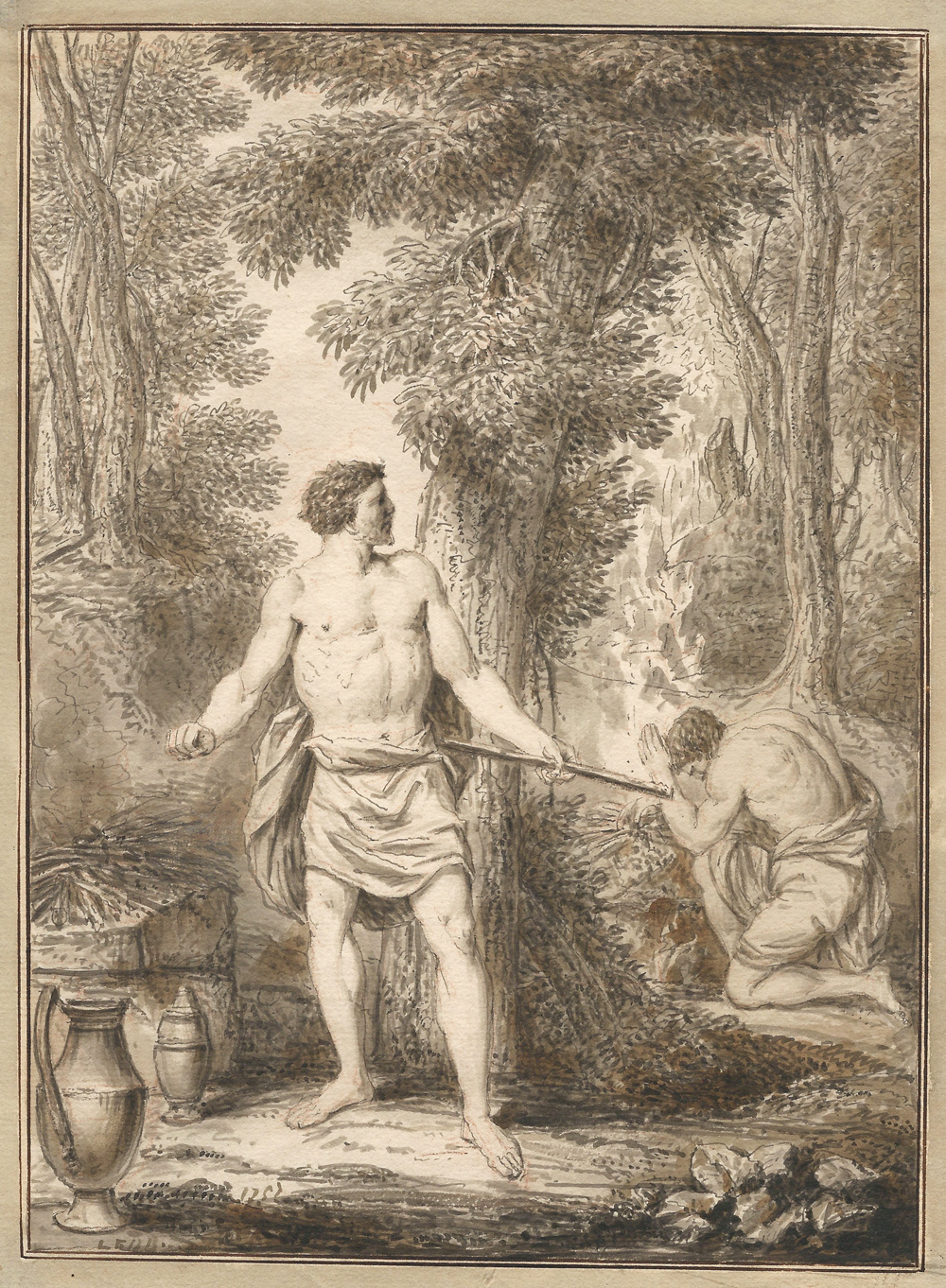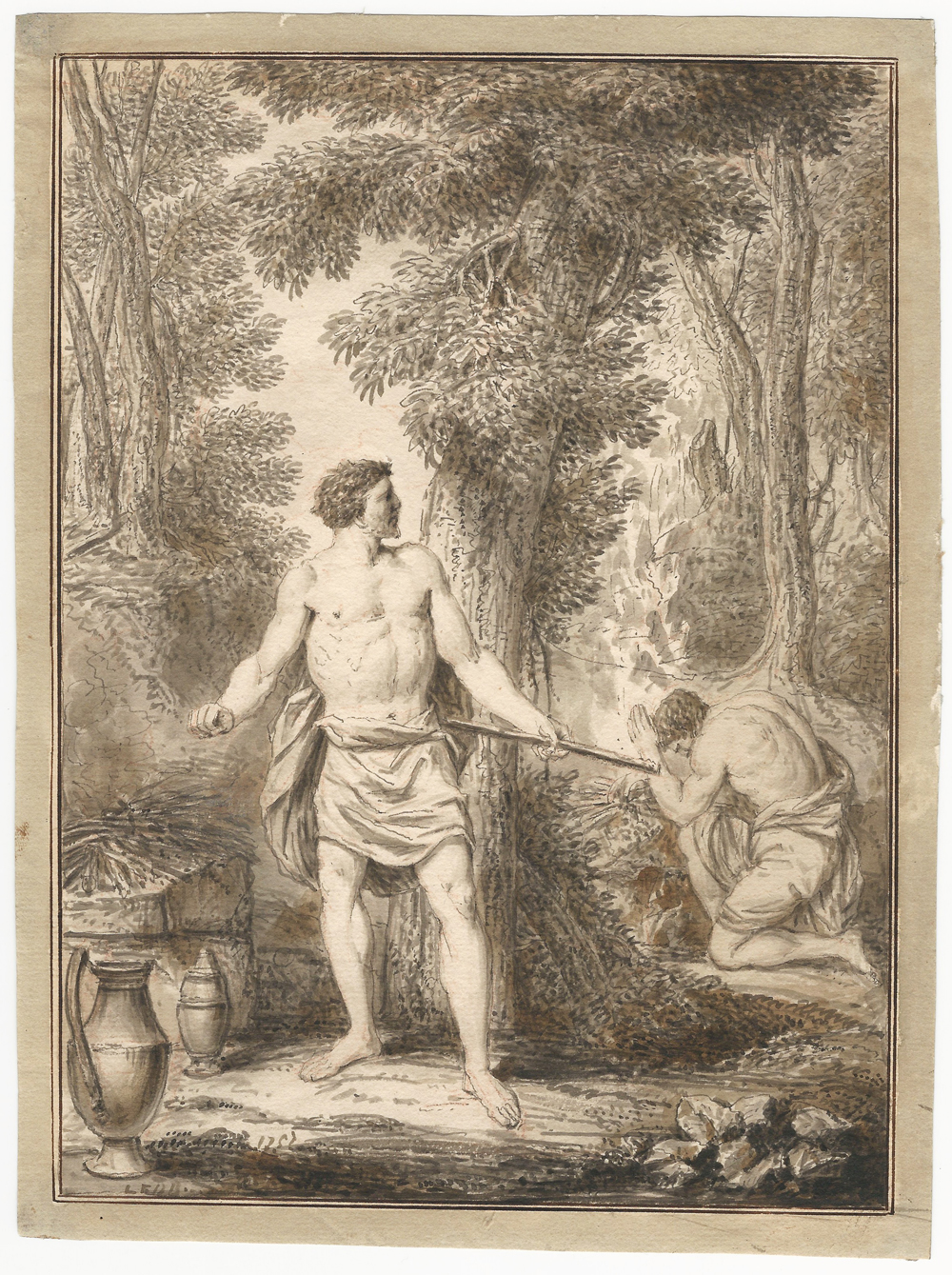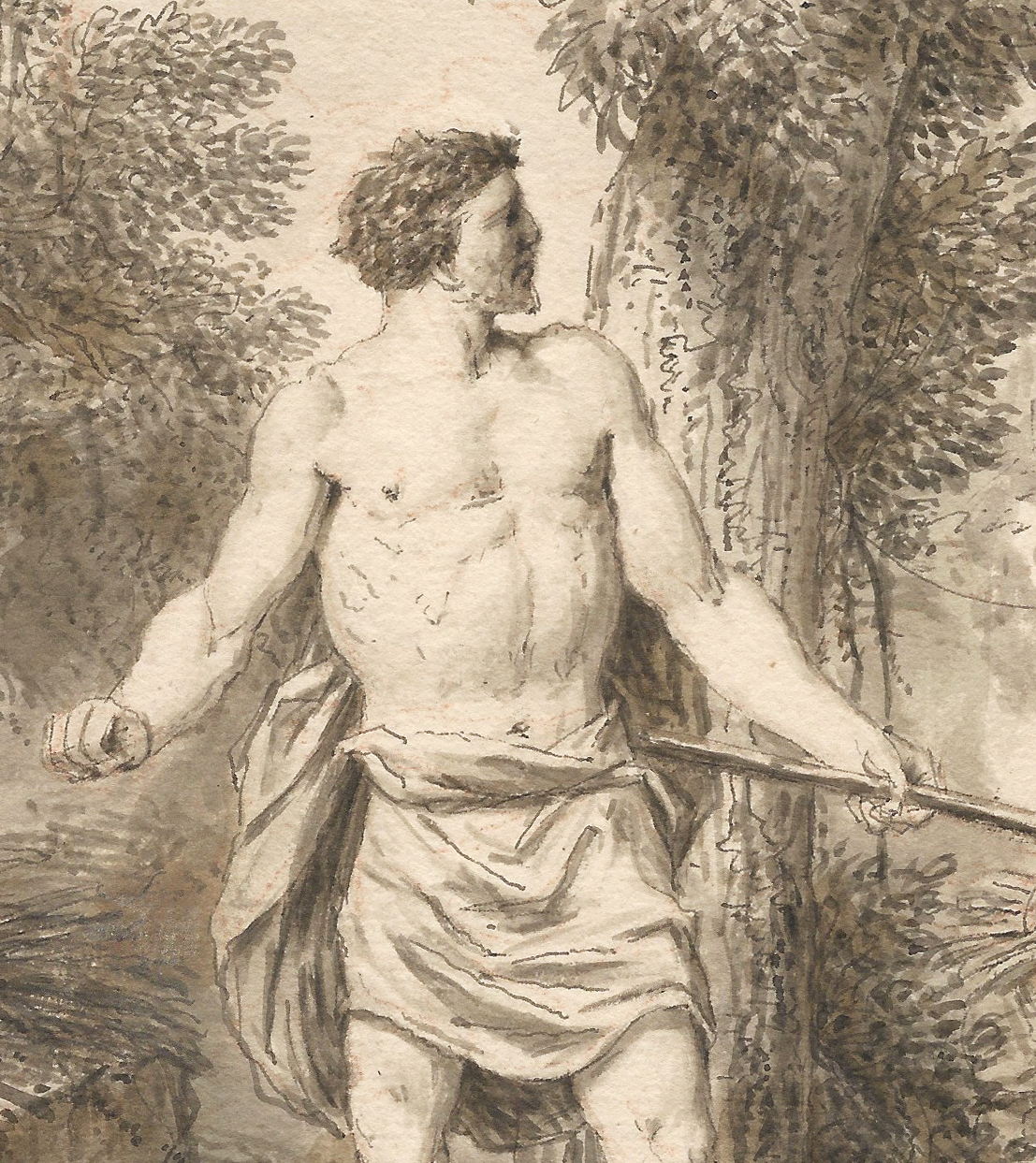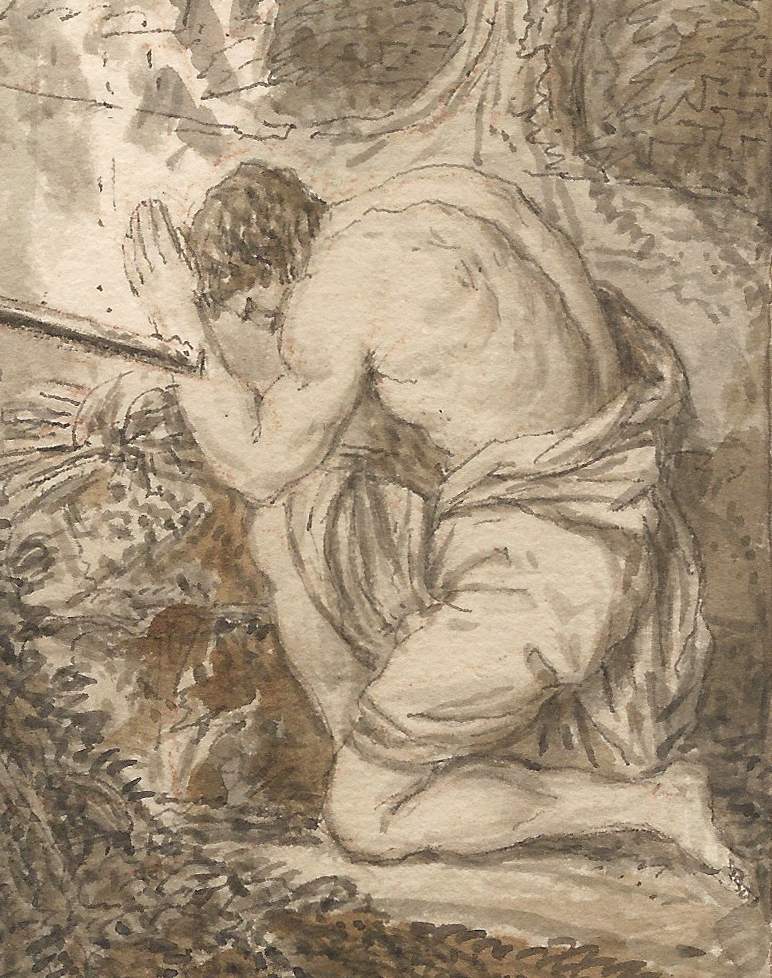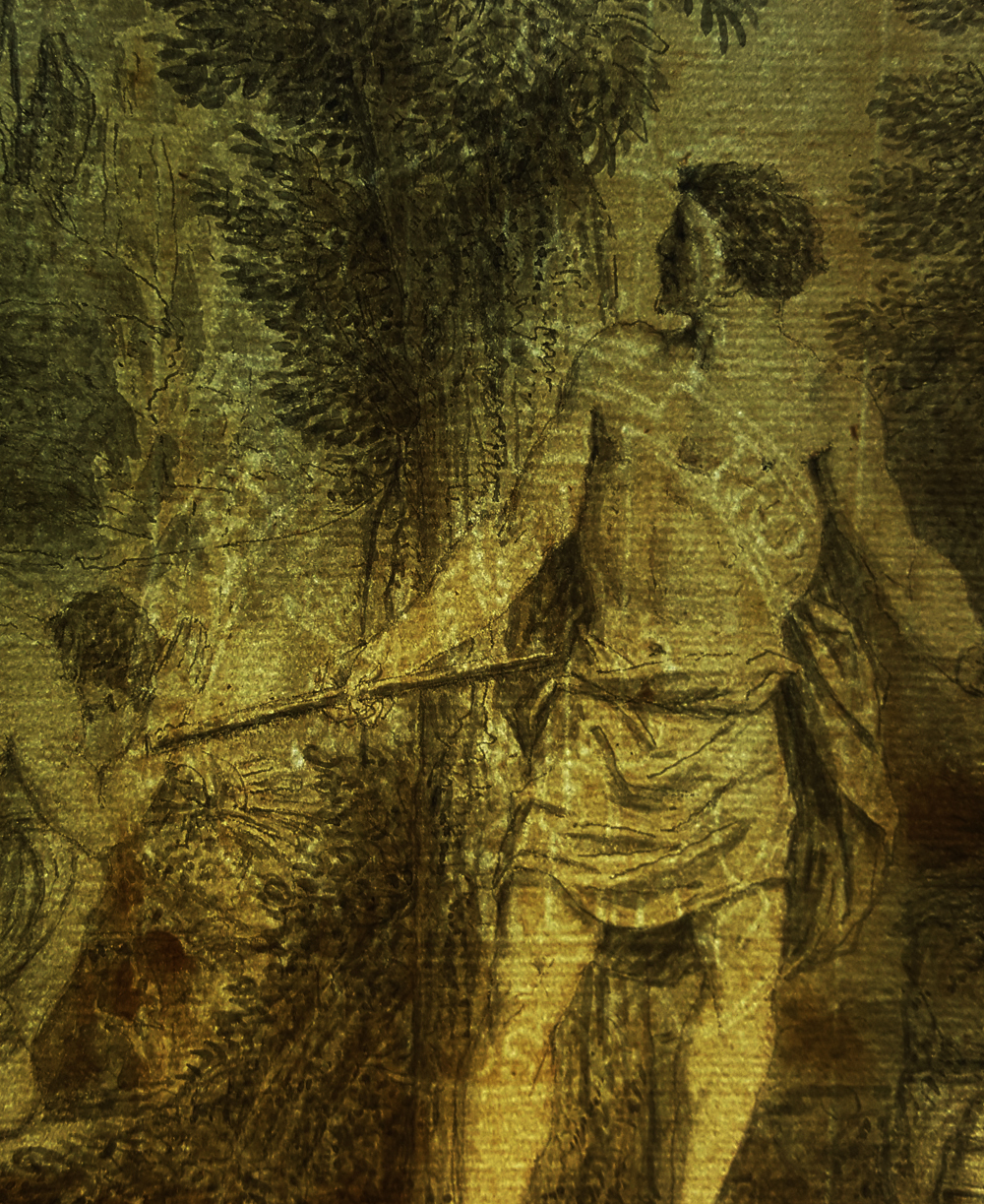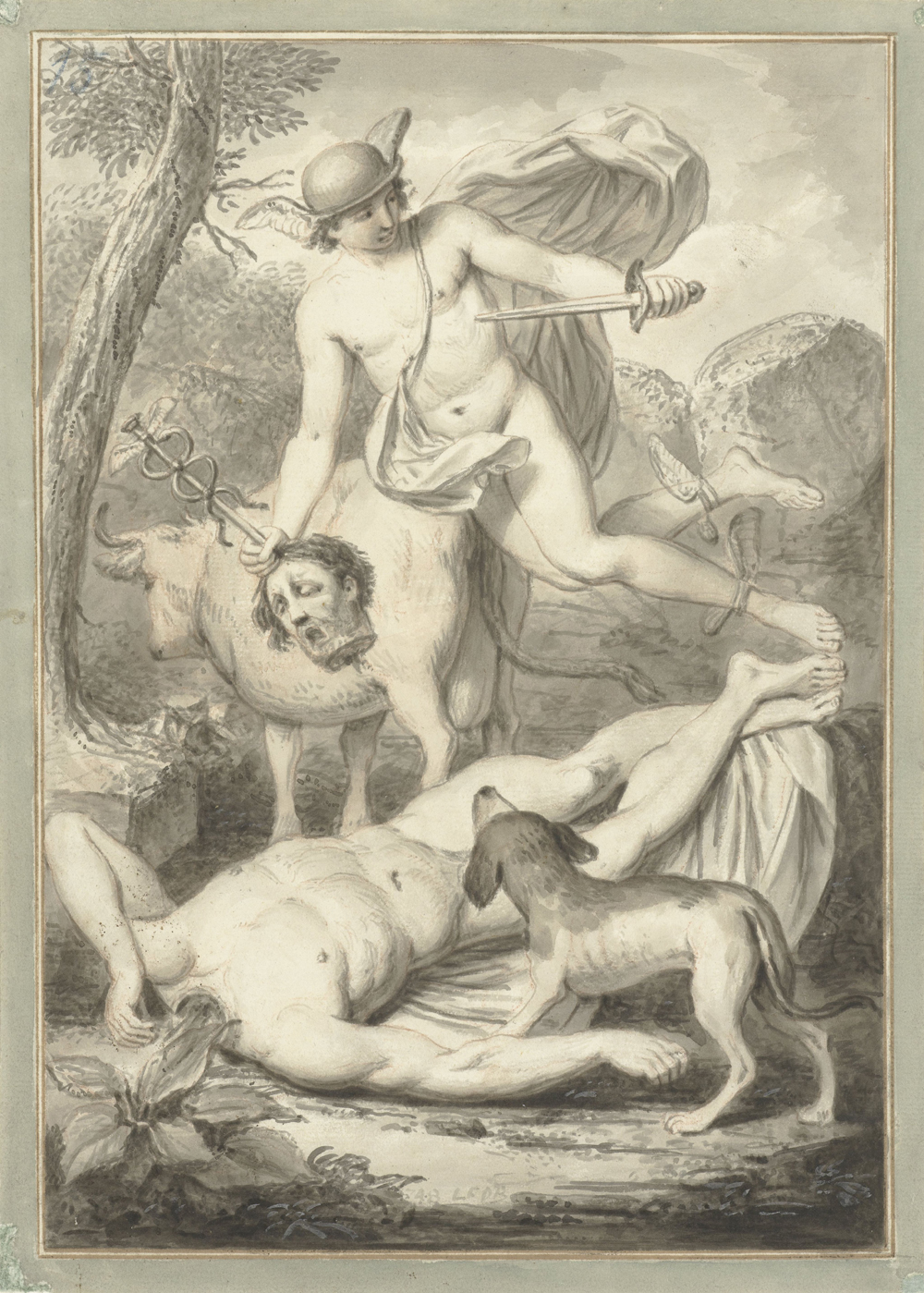LOUIS FABRITIUS DUBOURG (Amsterdam 1693 – 1775 Amsterdam)
Louis Fabritius Dubourg (Amsterdam 1693 – 1775 Amsterdam)
The Offering of Cain and Abel
Pen and grey ink, grey and brown wash, over traces of red chalk, framing lines in brown ink and green-grey wash, watermark Pro Patria, image size 240 x 175 mm (9.4 x 6.9 inch), sheet size 258 x 193 mm (10.2 x 7.6 inch)
Monogrammed ‘LFDB’ and dated ‘1757’ (lower left)
Provenance
Private collection, The Netherlands
***
Amsterdam-born Louis Fabritius Dubourg had been destined to follow in his father’s merchant footsteps, but showed a remarkable artistic talent at early age. He studied with Gerard de Lairesse and Jacob van Huysum, but was only able to explore his talents to the full when he took up the office of Churchwarden of the Amstel Church in 1718. His friendship with Bernard Picart was also of seminal importance for his artistic development. The prominent Dutch collector Cornelis Ploos van Amstel (1726-1798) considered Dubourg among the foremost artists of his time, ranking him alongside Isaac de Moucheron, Jacob de Wit and Cornelis Troost.1
Dubourg specialised in the most noble genre of history painting, taking episodes from the Scriptures and ancient mythology as his subjects. He studied the human physique in many red chalk academy nudes, some of which are preserved in the Rijksmuseum, Amsterdam. This practice is clearly reflected in the present drawing, the subject of which allowed Dubourg to display his skill in depicting the male anatomy.
The subject of the offering of Cain and Abel is rarely depicted in the history of art. As told in Genesis 4:1-7, Cain offered a selection of the fruit of the ground to God, while Abel offered the firstborn of his flock of sheep. The Lord had regard for Abel’s offering, but rejected Cain’s. Dubourg has depicted the bewildered Cain contemplating his brother Abel, whose sacrifice is burning vigorously. Ultimately Cain’s inappropriate attitude in worshipping the Lord resulted in the death of his brother Abel. This work can for instance be compared to Dubourg’s drawing of Mercury and Argus in the Rijksmuseum, Amsterdam (fig.).2
Although Dubourg produced this drawing in the middle of the eighteenth century during the height of the Rococo period, the sheet appears almost Neoclassical in outlook, foreshadowing the work of the great Jacques-Louis David (1748-1825). Dubourg himself applied the framing lines in pen and brown ink and greenish wash, which together with the monogram and date indicates that the drawing was intended for sale to a collector from the outset. The drawing of Mercury and Argus in the Rijksmuseum has identical framing lines.
1. M. van Berge-Gerbaud (a.o.), Hartstochtelijk verzameld. Beroemde tekeningen in 18de-eeuwse Hollandse collecties, Paris/Bussum 2001, p. 221.
2. Pen and brown ink, grey-brown wash, red chalk, heigthened in white, 273 x 196 mm, inv. no. RP-T-1938-144.
